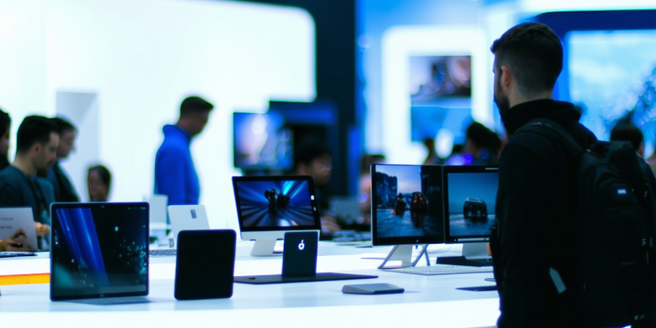Event Marketing Trends In Sweepstakes

Understanding the Rise of Sweepstakes in Event Marketing
The rise of sweepstakes in event marketing reflects a shift towards more interactive and engaging promotional strategies. Brands realize that traditional marketing efforts are often overlooked by audiences craving authenticity and interactivity. Sweepstakes offer a unique opportunity to connect with consumers on a personal level while incentivizing participation with alluring prizes. As consumer preferences evolve, brands are leveraging sweepstakes to create memorable experiences that resonate deeply. This approach not only boosts event attendance but also enhances brand visibility through word-of-mouth and social media sharing. The success of sweepstakes in event marketing often hinges on aligning the prize with the interests of the target audience, thereby enhancing engagement. As more brands understand the strategic value of sweepstakes, this trend will likely continue to grow, offering innovative ways to captivate and engage audiences.
Harnessing Social Media for Sweepstakes Success
Social media platforms offer unparalleled opportunities for promoting sweepstakes and engaging audiences. They act as a catalyst that amplifies sweepstakes campaigns by harnessing their vast reach and viral potential. Brands can leverage social media channels to disseminate sweepstakes information, engage participants, and drive sharing activities. A well-crafted hashtag campaign can foster community building around a sweepstake, enticing users to participate and share with their network. User-generated content encouraged by sweepstakes participation also boosts authenticity and brand loyalty. Moreover, social media insights provide valuable data on participant preferences and demographics, allowing for fine-tuning of future campaigns. As such, a strategic social media plan is crucial in maximizing sweepstakes success, reaching diverse audiences, and fostering engaging brand interactions that extend beyond the event itself.
Incorporating Gamification in Your Sweepstakes Strategy
Incorporating gamification into sweepstakes strategies can dramatically enhance user engagement and participation rates. Gamification involves integrating game-like elements, such as challenges or reward systems, into non-game contexts to boost interaction and interest. By tapping into innate human desires for competition, achievement, and recognition, gamified sweepstakes can captivate audiences and drive active participation. For instance, allowing participants to earn additional entries through completing small tasks or challenges can boost excitement and extend user interaction time. These elements stimulate a playful experience that enhances user enjoyment and fosters a deeper connection with the brand. As a result, incorporating gamification into sweepstakes not only enriches the participant experience but can also lead to higher retention, repeat participation, and positive word-of-mouth marketing.
Leveraging Data and Analytics to Enhance Sweepstake Engagement
Data and analytics play a pivotal role in enhancing sweepstake engagement by providing actionable insights into participant behavior and preferences. By analyzing data gathered from sweepstakes campaigns, marketers can gain a better understanding of what motivates participation and how to tailor future offerings to align with audience interests. Identifying patterns in entry times, prize preferences, and demographic engagement aids in crafting more targeted sweepstakes that resonate with specific audiences. Moreover, real-time analytics allow for on-the-fly adjustments to strategies, optimizing campaigns for maximum impact. Tracking key metrics such as entries, conversions, and sharing rates provides a comprehensive view of campaign performance. Leveraging these insights not only fosters more personalized sweepstakes experiences but also informs broader marketing strategies to enhance overall brand engagement and loyalty.
Legal Considerations for Running Successful Sweepstakes
Understanding the legal framework governing sweepstakes is crucial for running compliant and successful campaigns. Legal considerations vary by jurisdiction but generally focus on ensuring transparency, fairness, and lawful prize distribution. A clear set of official rules detailing entry methods, eligibility requirements, prize provisions, and deadlines is essential. Disclosure of any restrictions, such as age or residency limitations, safeguards against legal disputes. Additionally, understanding and adhering to relevant advertising laws and regulations is vital to avoid legal pitfalls. Entrants’ personal data collection and usage must comply with privacy laws, necessitating clear privacy policies. Brands should consult legal experts to navigate and adhere to applicable laws and ensure their sweepstakes remain compliant and uphold the integrity and trust of participants. A well-structured legal foundation is fundamental in fostering positive brand perceptions and participant confidence.
Case Studies: Successful Event Sweepstakes Campaigns
Examining successful sweepstakes campaigns offers valuable insights into effective strategies and best practices. One notable example is the widespread success of Coca-Cola’s “Share a Coke” campaign, which encouraged participation through personalized bottles that sparked viral sharing. Another successful case is Sephora’s “Sephora Ink”, a digital contest that leveraged social media engagement through user-generated content. These campaigns succeeded by aligning with brand values, tapping into consumer emotions, and incentivizing participation through impactful rewards. Analysis of these case studies reveals that successful sweepstakes revolve around understanding the target audience, creating emotional connections, and crafting compelling incentives. Inspiring narratives and interactive elements further enhance campaign resonance. By studying these examples, marketers can glean valuable lessons on implementing strategic sweeps that drive engagement, boost brand awareness, and generate meaningful consumer interactions.